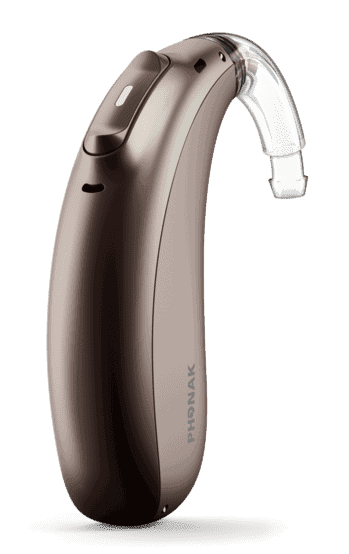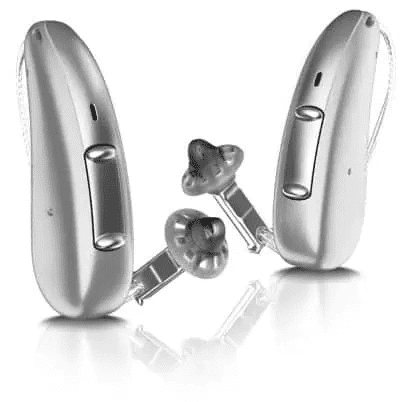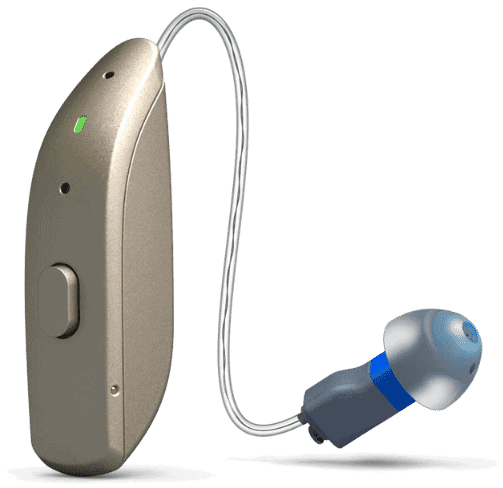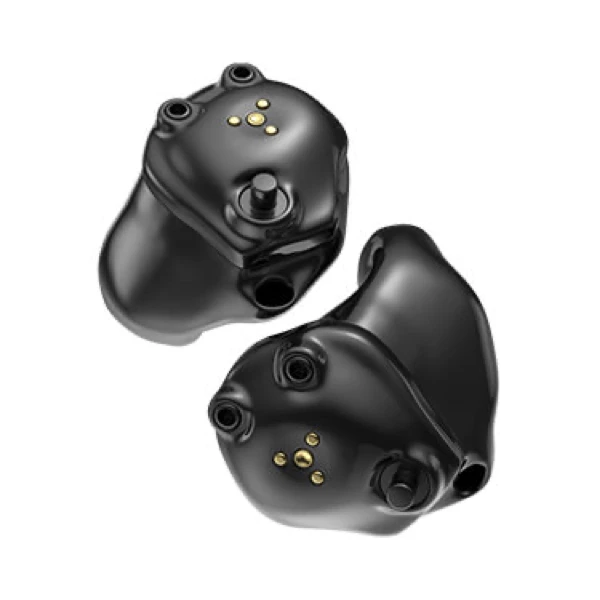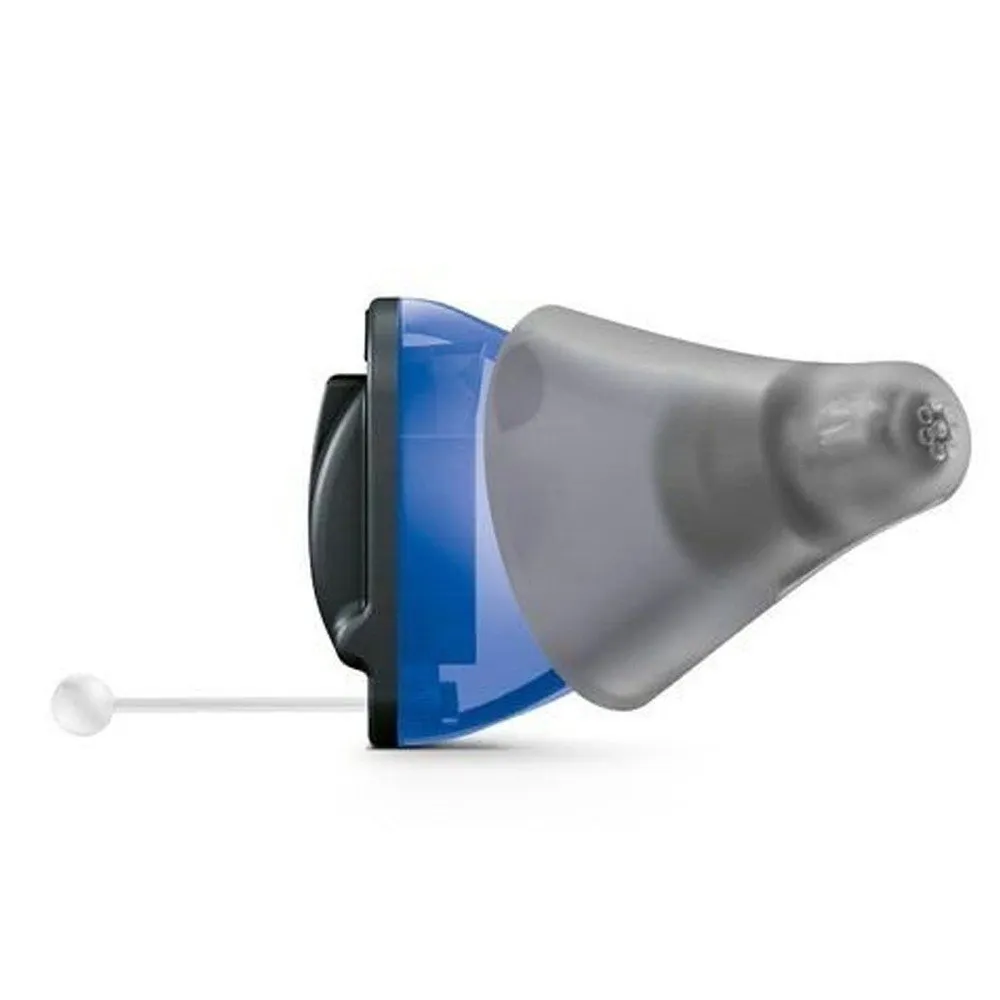Book a Free Hearing Aid Test & Trial
🏥 75+
Clinics
✨15+
Years Experience
👩⚕️100+
Audiologists

The hearing aid industry is growing rapidly day by day. New technology has been inherited in modern hearing machines that help to enhance the quality of life for those dealing with hearing loss. However, one of the most common concerns among individuals considering hearing aids is the cost. As technology continues to advance, the price range for hearing aids in 2025 is diverse, reflecting the varied features and capabilities these devices offer.
Table of Contents:
Factors Influencing Hearing Aid Costs: A Detailed Analysis
When it comes to investing in hearing aids, understanding the multitude of factors that influence their cost is essential. These factors play a significant role in determining the right device that not only fits your hearing needs but also your budget. Here’s a detailed analysis of the key factors influencing hearing aid costs:
1. Technology Level:
Hearing aids are available in a range of technological capabilities, ranging from basic to premium. Basic models offer fundamental features, amplifying sounds in a straightforward manner. In contrast, premium models integrate cutting-edge technologies such as noise reduction features, Bluetooth connectivity, and artificial intelligence. These advanced features enhance speech clarity, reduce background noise, and even learn the wearer’s preferences over time. Naturally, the more sophisticated the technology, the higher the cost, reflecting the research, development, and innovation invested in these devices.
2. Style and Design:
Hearing aids come in various styles, and every design caters to individual preferences and hearing needs. Behind-the-ear (BTE) hearing aid devices rest comfortably behind the ear, accommodating a wide range of hearing loss levels. In-the-ear (ITE) hearing aids are custom-fitted to sit within the outer ear, offering a more discreet appearance. Completely-in-the-canal (CIC) hearing aid machines and invisible-in-canal (IIC) hearing aids are incredibly discreet, fitting entirely inside the ear canal. The smaller and more discreet the design, the higher the price, as these devices often require advanced engineering for customization to fit the unique contours of the user’s ear, ensuring both comfort and functionality.
3. Features and Accessories:
Modern hearing aids boast an array of features designed to enhance user experience. Rechargeable batteries eliminate the need for frequent battery replacements, offering convenience and long-term savings. Telecoil options enable users to connect with compatible assistive listening devices, enhancing hearing in challenging environments. Smartphone compatibility allows for seamless integration, enabling users to adjust settings, stream calls, and enjoy multimedia directly through their hearing aids. Some hearing machines even include health tracking capabilities, monitoring aspects like physical activity and heart rate. Additionally, accessories like remote controls and streaming devices, while enhancing functionality, contribute to the overall cost of the hearing aid.
4. Professional Services:
The cost of hearing aids includes a range of professional services that are crucial for ensuring optimal performance. Expert Audiologist consultations are essential for evaluating hearing loss, understanding individual needs, and recommending suitable devices. Comprehensive hearing tests provide detailed insights into the extent and nature of the hearing impairment. Fittings and adjustments are necessary to customize the hearing aids to the user’s specific hearing profile, ensuring comfort and effectiveness. Follow-up appointments allow audiologists to fine-tune settings based on user feedback, ensuring a tailored and satisfactory experience. These services are integral to the overall cost, guaranteeing personalized care and effective usage of the hearing aid devices.
5. Brand and Manufacturer:
The reputation of the brand and the manufacturer significantly impact the cost of hearing aids. Established brands with a history of innovation, reliability, and customer satisfaction often come with a higher price tag. However, these brands often offer comprehensive warranties, excellent customer support, and regular software updates, enhancing the overall value of the investment. Opting for a reputable brand ensures not only the quality of the device but also the assurance of ongoing support and advancements in technology, providing users with confidence in their purchase.
Hearing Aids Price in 2025: A Comprehensive Overview
As we step into 2025, the landscape of hearing aids has evolved significantly, offering diverse options tailored to various needs and preferences. Understanding the price range is essential for individuals seeking hearing solutions. Here’s a detailed analysis of hearing aid prices in 2025, providing a comprehensive overview of what to expect in terms of costs and features:
1. Basic Hearing Aids (₹18,500 - ₹50,000 per ear):
Basic hearing aids cater to individuals with mild to moderate hearing loss. These models offer fundamental amplification features, enabling users to hear essential sounds more clearly. They serve as entry-level options, providing a significant improvement in hearing ability. While they lack the advanced features of higher-end models, they are designed to enhance overall sound perception. The price range of basic hearing aids is between ₹18,500 to ₹50,000 per ear, making them more accessible for those with budget constraints.
2. Mid-Range Hearing Aids (₹50,000 - ₹2,50,000 per ear):
Mid-range hearing aids are the go-to choice for individuals seeking a balance between affordability and advanced features. Priced between ₹50,000 and ₹2,50,000 per ear, these models offer a broader range of functionalities. They include features such as noise reduction, feedback cancellation, telecoil options, and smartphone compatibility. Mid-range hearing aids provide users with a more tailored and comfortable hearing experience. Additionally, these models often come with customizable settings, allowing audiologists to adjust the devices to the user’s specific hearing profile.
3. Premium Hearing Aids (₹2,50,000 and above per ear):
Premium hearing aids represent the pinnacle of technological advancement in the hearing aid industry. Equipped with the latest innovations, these devices offer unparalleled features and customization options. Priced at ₹2,50,000 and above per ear, premium hearing aids are designed for individuals who demand the utmost in hearing clarity and convenience. These models include sophisticated noise reduction algorithms, Bluetooth connectivity for seamless interaction with smartphones and other devices, artificial intelligence capabilities for adaptive learning, and rechargeable batteries for enhanced convenience. Premium hearing aids provide a natural listening experience, even in challenging environments, making them ideal for individuals with complex hearing requirements.
Additional Considerations:
It’s crucial to recognize that the cost of hearing aids often includes essential services such as audiologist consultations, comprehensive hearing tests, fittings, adjustments, and follow-up appointments. These services are integral to ensuring that the hearing aids are tailored to the user’s specific needs, providing a personalized and effective hearing solution.
Furthermore, while the initial investment might seem significant, it’s essential to view hearing aids as a long-term investment in one’s overall well-being. Improved communication, enhanced social interactions, and increased confidence are invaluable benefits that high-quality hearing aids provide.
Maximizing Your Savings: Strategies for Affordable Hearing Aids
Saving on hearing aids is not just about finding the lowest price; it’s about investing wisely in your auditory well-being. Here are detailed strategies to help you save while ensuring a satisfying hearing experience:
Expert Consultation: A certified audiologist is the key to a successful hearing machine experience. While researching prices is crucial, the expertise of an audiologist ensures proper fitting. Buying from a reputable professional ensures not only the right device for your needs but also a tailored fitting that enhances your hearing satisfaction.
Thorough Price Comparison: Researching and comparing prices from various hearing aid providers is essential. However, don’t solely base your decision on the lowest price. Also check the services offered with the price, such as after-care programs, follow-up appointments, and warranty. A slightly higher initial cost with comprehensive services can save you more in the long run by avoiding hidden expenses.
Seizing Discounts and Promotions: Keep an eye on discounts, promotions, and seasonal offers provided by both manufacturers and local providers. These opportunities can significantly reduce the initial cost. However, ensure the discounts don’t compromise the quality of the device or the services associated with it.
Assessing Long-Term Expenses: When evaluating costs, don’t just focus on the upfront price. Consider the long-term expenses associated with maintaining and repairing hearing aids. Reputed providers offer extensive after-care programs, saving you money on future repairs. Investing in higher-quality devices might seem costlier initially, but they often require fewer repairs and replacements, making them cost-effective in the long term.
Understanding Value Over Price: Hearing aids are an investment in your overall well-being. It’s crucial to understand the value a device provides, not just the price. Consider factors like comfort, ease of use, and advanced features. A slightly higher upfront cost might be justified if it guarantees a seamless and satisfying hearing experience.
Exploring Insurance Coverage: Check if your insurance or healthcare plan covers hearing aids. Some policies provide partial or full coverage for hearing aids, significantly reducing your out-of-pocket expenses. Verify the coverage details and explore in-network providers to maximize your benefits. Hearing aids are an investment in your overall well-being. It’s crucial to understand the value a device provides, not just the price. Consider factors like comfort, ease of use, and advanced features. A slightly higher upfront cost might be justified if it guarantees a seamless and satisfying hearing experience.
FAQs
Certainly, here are some of the most frequently searched FAQs related to “Hearing Aids Cost in 2025”
Q1: What is the average cost of hearing aids in 2025?
The average cost of a hearing aid depends upon the model, feature, and technology level. However, the average price of hearing aids in 2025 starts from INR 18,500 to lakhs.
Q2: What features do mid-range hearing aids include, and what is their price in 2025?
Hearing aids are packed with various features. Mid-range hearing aid includes features like rechargeability, Bluetooth connectivity, and artificial intelligence. The price of mid-range hearing aids in 2025 is between INR 50,000 to INR 2,50,000.
Q3: What are the best value-for-money hearing aids?
If you are looking for value-for-money hearing aids in India, then there are various brands available in India. Some of the leading hearing aid brands that offer the best ear machines are Signia, Phonak, Widex, and Resound. Their value-for-money hearing aid models are Signia Styletto AX, Signia Silk X, Phonak Audeo Lumity, Widex Moment Sheer, Widex Enjoy, and Resound Omnia.
Conclusion
Understanding the factors influencing hearing aid costs and exploring available assistance programs is essential when considering a purchase. It’s recommended to consult with a qualified audiologist to determine the most suitable hearing aids based on individual needs and preferences. Investing in quality hearing aids not only enriches one’s auditory experiences but also significantly contributes to a fuller, more engaged lifestyle.


